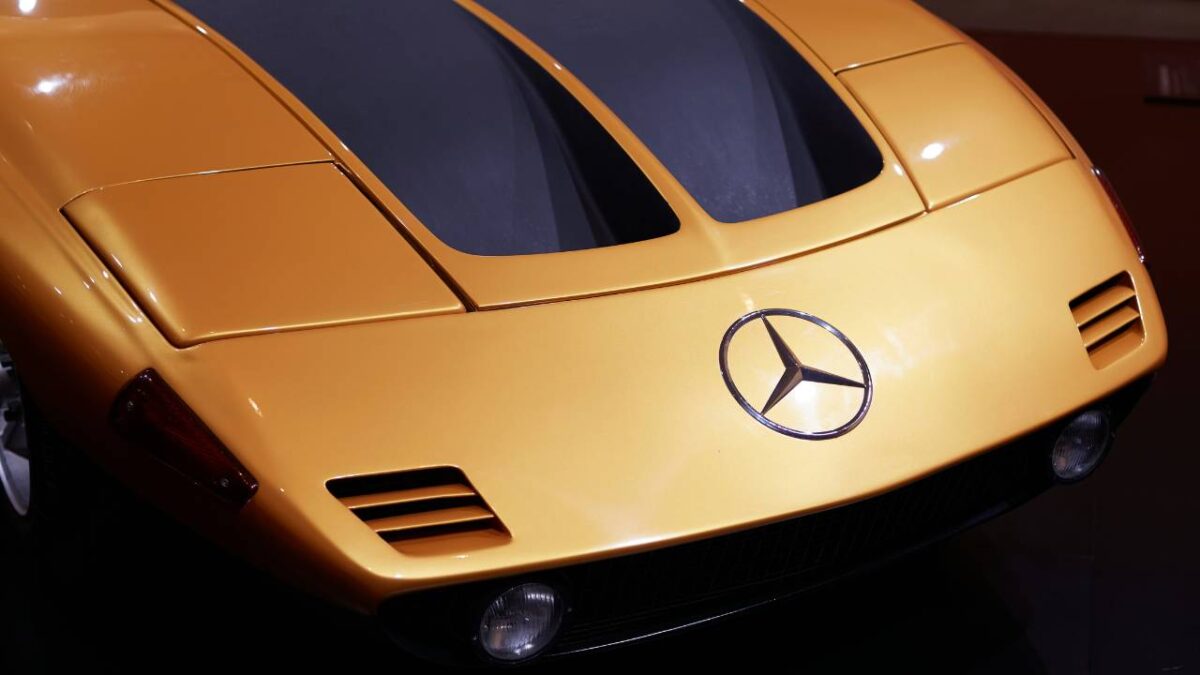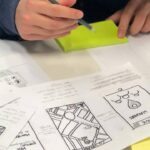As you peek into the world of car design, you find yourself at the forefront of a revolution in the automotive industry. Traditional concepts are giving way to radical ideas, as technology reshapes what you consider possible on four wheels. You’re not just looking at changes in contours and colours; the transformation runs deeper. The vehicles you’ll drive tomorrow are being crafted today with an amalgamation of sustainability goals, digital advancements, and a sharp focus on the user experience.
Think about the electric vehicle surge shaking up your roads. Car design isn’t only about aesthetics now; it’s also about integrating complex electrical systems, maximising range, and ensuring that charging is as seamless as filling up at a petrol station. Moreover, the rise of autonomous technology is steering car design away from driver-centric to passenger-focused, where comfort and connectivity take the wheel.
Imagine stepping into your future car; the interior resembles a mobile lounge more than a traditional cabin. Features are tailored to your desires, be they for entertainment, work, travel-focused living, or relaxation. The exterior, perhaps, reflects ecological sensibilities with materials chosen for sustainability and recyclability. This is just a taste of the exciting journey the automotive industry is embarking upon, and you’re in the driver’s seat.
Evolution of Car Design
Car design has undergone a remarkable transformation over the years, steered by leaps in technology and a deep understanding of aerodynamics and materials science. As you explore this section, you’ll discover how technology and AI influence car design, the dreams encapsulated in concept cars, and the impact of regulations on the materials used.
Influence of Technology on Car Design
Your modern car is a product of advanced technology, from sleek exteriors to the intricate mechanics under the hood. Technology has always played a pivotal role in car design, dictating both the aesthetics and functionality. It’s the engine behind innovations such as electric powertrains and autonomous driving features, which are becoming standard in new models. You witness the effect of technology in the streamlined bodywork designed for efficiency and the integration of digital systems for improved user experiences.
The Role of AI in Automotive Design
AI isn’t just revolutionising the way your car is driven; it’s also reshaping how it’s designed. AI helps designers by suggesting numerous variations on car models, optimising for factors like drag coefficient and weight distribution. It crunches vast amounts of data to predict design outcomes, streamline the design process, and ensure that new cars meet both your aesthetic preferences and functional needs.
Concept Cars: Imagining the Future
Concept cars give you a glimpse into the future, showcasing groundbreaking design and technology that could one day become a part of your daily drive. They are often bold, embodying the designers’ and engineers’ visions for the future of transportation. From ultra-efficient electric engines to self-healing materials, concept cars are the testing ground for innovations that could define the next generation of vehicles.
Car Design Regulations and Materials
Your safety and the planet’s well-being are at the core of car design regulations. These laws influence the materials carmakers can use and the overall design of the vehicle, ensuring that every car on the road meets minimum safety standards and environmental regulations. As these regulations evolve, they push manufacturers toward sustainable materials and designs that reduce emissions, challenging them to continuously innovate within these boundaries.
The Future Outlook for Car Manufacturers

In the rapidly evolving automotive world, your understanding of the latest trends is essential. Car manufacturers face an exciting era marked by significant leaps in innovation, increasingly sustainable practices, and a shift towards electrification that promises to redefine transportation.
Leading Brands and Their Direction
Companies such as Tesla, BMW, Mercedes-Benz, and Audi continue to push the boundaries of what’s possible with their latest models. As a leader in electric vehicles (EVs), Tesla has set trends with their electric pickup trucks and SUVs, influencing others to follow suit. BMW and Mercedes-Benz aren’t far behind, showing a strong commitment to electrification through new EV releases. Honda, Nissan, and Toyota are also adopting this directive, aiming to balance their traditional offerings with the introduction of more electric models, ensuring that they remain competitive in a market enthusiastic about innovation and sustainability.
Innovations Shaping the Future of Transportation
Your journey on the road is increasingly defined by advancements in autonomy. Several automakers have introduced features that bring you closer to a future where cars will drive themselves. Brands like Cadillac and Tesla are at the forefront of this technology with their superior driver-assistance systems. On your travels, don’t forget about the importance of high-quality tires, such as those on offer from Shoes for My Car Ireland. These tires are designed to complement the advancements in vehicle design and allow you to fully appreciate the enhanced performance.
Strategies for Sustainability and Electrification
Electrification is not just a trend, it’s an imperative for big names like Ford and Maserati, both of which are expanding their electric portfolios. Ford, known for its iconic muscle cars, is adapting by creating an electric version of their popular Mustang model, while luxury brand Maserati signals a greener approach without compromising on performance. The switch to electric by various automakers is not solely driven by consumer demand but also by the recognition that sustainability is crucial for the future health of our planet. Your support for this transition is vital as it encourages automakers to continue investing in environmentally friendly technologies.
Electric and Hybrid Vehicles

Electric and hybrid vehicles represent a significant shift in automotive design, focusing on sustainability and innovation. You’ll see advancements in electric vehicle technology, the rising popularity of hybrid models, and unique challenges faced during production and design.
Advancements in Electric Vehicle Technology
Your electric vehicle (EV) boasts cutting-edge technology that’s constantly improving. The battery technology propelling you forward is key, with lithium-ion batteries leading the charge. These batteries are lighter, more efficient, and offer longer range than ever before. You’ll also benefit from regenerative braking systems that recover energy usually lost while braking, giving you an extra boost to your vehicle’s efficiency.
The Rise of Hybrid Models
Hybrid vehicles blend traditional internal combustion engines with electric motors, giving you the best of both worlds. You’ll appreciate the versatility as hybrids cleverly reduce emissions and improve fuel economy. They offer a suitable stepping stone into the world of electric vehicles, providing you with improved range and easing concerns over solely relying on battery power.
Challenges in EV Production and Design
When it comes to EV production, you must consider both economic and technical aspects. Battery production remains costly, although prices are dropping as technology advances. Also, ensuring that you have access to a wide network of charging stations is another challenge manufacturers must face to meet your needs. Production processes are also being refined to accommodate the unique design and structural requirements of electric and hybrid vehicles.
Interior and Exterior Design Innovations

Advances in technology and materials are transforming the way your car looks and feels, focusing keenly on the user experience, comfort, aerodynamics, and efficiency.
Revolutionising the User Experience Through Design
Your car’s interior design has evolved to be much more than just a space to sit and drive. The integration of technology such as touchscreens, gesture controls, and advanced infotainment systems ensures that your every command is at your fingertips. Customisable ambient lighting and sound systems tailored to your preferences create an environment that is not just a mode of transport, but a holistic experience.
The Interplay Between Interior Space and Comfort
The concept of interior space has undergone significant changes with the shift towards minimalism and functionality. Seats are now designed to be adaptable, offering you superior comfort, more legroom, and the option for personalisation. Innovative storage concepts provide a clean, uncluttered cabin, promoting a zen-like atmosphere for you to relax as you travel.
Exterior Design Trends for Aerodynamics and Efficiency
The quest for efficiency has sculpted the exterior of your car into a work of art, aimed at slicing through the air with minimal resistance. Manufacturers are refining car shapes to enhance aerodynamics, resulting in smooth, flowing lines that are pleasing to your eye while also reducing fuel consumption and emissions. Innovative use of lightweight materials in the bodywork not only improves efficiency but contributes to a more dynamic driving experience for you.
Automotive Technology and Connectivity
In the realm of automotive design, your car is evolving into a sophisticated hub of technology and connectivity. This pivotal shift ensures that driving experiences are not just about getting from point A to point B, but also about the seamless integration of intelligent features that you find in modern devices.
The Integration of Sensors and Autonomous Driving
The heart of autonomous driving beats with the rhythm of advanced sensors. Your car is now being equipped with a myriad of sensors that collect and process information about the environment. Autonomous driving technology uses this data to navigate roads with minimal input from you. You’ll find that cars can now perform tasks like parking and cruise control with higher precision, thanks to these advancements, elevating business travel experiences.
Enhancing Connectivity in Modern Cars
Your vehicle’s connectivity capabilities have witnessed monumental strides forward. Modern cars are no longer isolated units but are part of a larger, interconnected ecosystem. Through in-built telematics and infotainment systems, your car can seamlessly connect to various devices and services, offering you a more integrated and personalised experience.
Impact of Technology on Safety and Driver Assistance
With refined technology, your safety on the road has become a primary focus. Driver assistance systems like adaptive cruise control and lane keeping assist use sophisticated sensors and algorithms to respond to potential hazards. The incorporation of such systems ensures that your journeys are not only convenient but safer, marking a significant leap in protecting you and your passengers.
Conclusion
Car design is poised to continue its exciting evolution, with your daily commute likely to be transformed in surprising ways. Electric vehicles (EVs) are set to dominate, offering cleaner, quieter journeys. The focus will be on sustainability, with recycled materials and innovative manufacturing leading the charge.
Stay tuned to witness how these advancements will make driving more enjoyable, sustainable, and safe for you and your loved ones. The roads of the future await, and they promise an exhilarating ride.






